The History along with Magic of the Japanese Teahouse
The first thing that will often comes to mind when thinking of Japanese architecture is usually teahouse or tearoom ( chashitsu ). Tea emerged with the development of the tea ceremony ( chanoyu or Sado ) - an art form that will expresses the sentimentality along with the Japanese aesthetic through the act drinking tea. The chashitsu as the item is usually right now understood is usually largely attributed to Sen no Rikyū, who developed the item by innovating on areas that will have already been found in Japanese architecture. because of This specific reason, the tea room occupies a special position in Japanese architecture. Today, many types of chashitsu are being built.
株式会社 DEEP SMARTS
What is usually the Japanese tea ceremony ?
the item is usually said that will tea was introduced to Japan coming from China during the Heian period (794-1185). While drinking tea culture has been appreciated by nobles along with monks, tea is usually consumed less as a casual drink along with more inside manner of a drug, because of the stimulant effects of caffeine. After Zen monks brought the culture of tea coming from China to Japan during the Kamakura period (1185-1333), the tradition of tea drinking spread to samurai, members of the military class, as well.
coming from the second half of the Muromachi period (1336-1573), a combination of tea-tasting called tocha has become a well-liked sport game among the samurai, who were known for the flamboyant behavior. Participants will try to guess the brand of tea they were served while engaging in various other frivolities, like collaborative poetry ( renga) in clubhouses or Kaisho . While the clubhouses are not used exclusively for that will purpose, they were nevertheless the first Japanese tea rooms.
Later, a tearoom ( shoin not cha ) tradition began with the development of traditional residential architecture ( shoin-zukuri ). yet coming from the late 15th century, along with Murata Jukō Takeno Jōō introduced a brand-new style tea ceremony known as wabi-cha . This specific thatched hut "or style" rustic "tea sought to create a" mountain hut inside city "that will offered a taste of the rural population in an urban space.
He was the wabi-cha tradition Rikyu perfected inside second half of the 16th century, to strengthen the development of This specific Japanese art. smaller buildings along with spaces that will come to mind when the Japanese hear the word 'teahouse' come directly coming from the tearooms Rikyū thatched roof.
the item is usually said that will tea was introduced to Japan coming from China during the Heian period (794-1185). While drinking tea culture has been appreciated by nobles along with monks, tea is usually consumed less as a casual drink along with more inside manner of a drug, because of the stimulant effects of caffeine. After Zen monks brought the culture of tea coming from China to Japan during the Kamakura period (1185-1333), the tradition of tea drinking spread to samurai, members of the military class, as well.
coming from the second half of the Muromachi period (1336-1573), a combination of tea-tasting called tocha has become a well-liked sport game among the samurai, who were known for the flamboyant behavior. Participants will try to guess the brand of tea they were served while engaging in various other frivolities, like collaborative poetry ( renga) in clubhouses or Kaisho . While the clubhouses are not used exclusively for that will purpose, they were nevertheless the first Japanese tea rooms.
Later, a tearoom ( shoin not cha ) tradition began with the development of traditional residential architecture ( shoin-zukuri ). yet coming from the late 15th century, along with Murata Jukō Takeno Jōō introduced a brand-new style tea ceremony known as wabi-cha . This specific thatched hut "or style" rustic "tea sought to create a" mountain hut inside city "that will offered a taste of the rural population in an urban space.
He was the wabi-cha tradition Rikyu perfected inside second half of the 16th century, to strengthen the development of This specific Japanese art. smaller buildings along with spaces that will come to mind when the Japanese hear the word 'teahouse' come directly coming from the tearooms Rikyū thatched roof.
岩崎 建築 研究室
Requirements chashitsu
The tea room is usually a space designed specifically to facilitate tea gatherings. However, as Masao Nakamura - the foremost expert on chashitsu - wrote: "Mere possession of necessities for a tea ceremony is usually not enough to make a tea room. In addition to meeting the functional requirements of the ceremony, the space must also evoke the proper atmosphere of the tea ceremony. "( An image of Japanese History Tearooms Tankosha 1998). The tea ceremony has evolved rooted in Japanese sensitivities concerning nature; therefore, teahouses are spaces that will reflect those feelings.
The basic components of a traditional teahouse
· Garden Teahouse ( roji )
In front of the house traditional tea is usually a garden called roji. Guests traverse a path of stepping stones, admiring the plants along with trees, before washing hands in a stone basin to enter the teahouse building.
Going through This specific natural area outside of the building offers a pleasant way to approach the space of another world which is usually the tea room. The host of the tea collection uses a different entry, called sadōguchi .
The tea room is usually a space designed specifically to facilitate tea gatherings. However, as Masao Nakamura - the foremost expert on chashitsu - wrote: "Mere possession of necessities for a tea ceremony is usually not enough to make a tea room. In addition to meeting the functional requirements of the ceremony, the space must also evoke the proper atmosphere of the tea ceremony. "( An image of Japanese History Tearooms Tankosha 1998). The tea ceremony has evolved rooted in Japanese sensitivities concerning nature; therefore, teahouses are spaces that will reflect those feelings.
The basic components of a traditional teahouse
· Garden Teahouse ( roji )
In front of the house traditional tea is usually a garden called roji. Guests traverse a path of stepping stones, admiring the plants along with trees, before washing hands in a stone basin to enter the teahouse building.
Going through This specific natural area outside of the building offers a pleasant way to approach the space of another world which is usually the tea room. The host of the tea collection uses a different entry, called sadōguchi .
岩崎 建築 研究室
· entry Teahouse ( nijiriguchi )
one of the main features of hut thatched tea house begun by Rikyū is usually the guest entrance, or nijiriguchi . The square door is usually so weak along with smaller customers can not move through the item without bending down along with curl up as they crawl through. (See wooden sliding door inside center of This specific image.) The host features a full-size entry.
Although there are various stories surrounding the origin of nijiriguchi , the item is usually believed that will as the smaller door even force a great general to leave his sword in door to get through, space is usually inside detached coming from reality. Customers are moving beyond their social status along with interact as equals. the item is usually also said that will the entry through such a smaller door makes the teahouse space feels bigger.
one of the main features of hut thatched tea house begun by Rikyū is usually the guest entrance, or nijiriguchi . The square door is usually so weak along with smaller customers can not move through the item without bending down along with curl up as they crawl through. (See wooden sliding door inside center of This specific image.) The host features a full-size entry.
Although there are various stories surrounding the origin of nijiriguchi , the item is usually believed that will as the smaller door even force a great general to leave his sword in door to get through, space is usually inside detached coming from reality. Customers are moving beyond their social status along with interact as equals. the item is usually also said that will the entry through such a smaller door makes the teahouse space feels bigger.
岩崎 建築 研究室
· chashitsu floor height
The standard size for a chashitsu is usually 8.2 square meters (4.5 tatami, or 4.5 jō). (Japanese Rooms are usually measured inside number of tatami mats that will cover the floor. tatami size varies by region, along with ranges coming from 1.5 to 1.9 square meters. The tatami traditionally used inside Kyoto area is usually used for chashitsu throughout Japan. the item is usually 1.82 square meters, or 1.91mx 0.955m.)
smaller parlors tea are called koma , along with larger rooms are called hiroma . This specific room is usually Nijō nakaita-koma (two mats along having a stove hole). Even This specific little tea room can hold a rally of tea for three people along having a host.
· Stove ( ro )
coming from November to April, a stove installed inside tea room of the floor by cutting a piece of the tatami is usually used to boil water. coming from May to October, the stove is usually covered with tatami at the back, along having a portable stove called furo , is usually used instead.
· Alcove (toko)
This specific is usually a corner or alcove inside tea room decorated with scrolls along with hanging flowers. When customers enter a teahouse, they proceed first to the alcove to admire the decor. Toko are composed of an alcove position ( tokobashira ), a lower cabin trim ( tokogamachi ), companion after alcove ( aitebashira ) along with upper alcove lining ( otoshigake) . the item is usually not uncommon to spend years collecting coins with the right story along with character based on these areas.
The alcove wall plaster along with sometimes a window ( shitajimado ) which indicates the walls of the network frame can be opened on one of the side walls. The cabin floor can be paneled wood or tatami.
· Laundry room ( mizuya )
This specific is usually where the host cleans the utensils along with made preparations for a meeting of tea.
The standard size for a chashitsu is usually 8.2 square meters (4.5 tatami, or 4.5 jō). (Japanese Rooms are usually measured inside number of tatami mats that will cover the floor. tatami size varies by region, along with ranges coming from 1.5 to 1.9 square meters. The tatami traditionally used inside Kyoto area is usually used for chashitsu throughout Japan. the item is usually 1.82 square meters, or 1.91mx 0.955m.)
smaller parlors tea are called koma , along with larger rooms are called hiroma . This specific room is usually Nijō nakaita-koma (two mats along having a stove hole). Even This specific little tea room can hold a rally of tea for three people along having a host.
· Stove ( ro )
coming from November to April, a stove installed inside tea room of the floor by cutting a piece of the tatami is usually used to boil water. coming from May to October, the stove is usually covered with tatami at the back, along having a portable stove called furo , is usually used instead.
· Alcove (toko)
This specific is usually a corner or alcove inside tea room decorated with scrolls along with hanging flowers. When customers enter a teahouse, they proceed first to the alcove to admire the decor. Toko are composed of an alcove position ( tokobashira ), a lower cabin trim ( tokogamachi ), companion after alcove ( aitebashira ) along with upper alcove lining ( otoshigake) . the item is usually not uncommon to spend years collecting coins with the right story along with character based on these areas.
The alcove wall plaster along with sometimes a window ( shitajimado ) which indicates the walls of the network frame can be opened on one of the side walls. The cabin floor can be paneled wood or tatami.
· Laundry room ( mizuya )
This specific is usually where the host cleans the utensils along with made preparations for a meeting of tea.
鞍 城 建設
To construct a tea house or tea room must be obtained using a variety of skilled workers, including carpenters, thatcher, a plasterer, a craftsman fittings ( tategushi ), a supplier received a of tatami along having a gardener.
Architect Yasushi Iwasaki Iwasaki Laboratory of Architecture, which produces a large number of residential tearooms, said: "The chashitsu is usually actually the product of all Japanese traditional crafts combined. Rather than calling a work of architecture, the item may as well be called the largest tea utensils. 'Iwasaki designed the tearooms inside last three images above.
In explaining its tea room designs, Iwasaki said, "Many of my clients who appreciate the tea ceremony decided they were interested in holding their own rallies of tea, yet there has been also some people who were interested in having their own teahouse because they wanted to learn the tea ceremony. "Tea gatherings include a traditional meal ( kaiseki ), thick tea ( koicha ) along with thin tea ( usucha ) .
Order 10 ways to prepare your home for spring
Architect Yasushi Iwasaki Iwasaki Laboratory of Architecture, which produces a large number of residential tearooms, said: "The chashitsu is usually actually the product of all Japanese traditional crafts combined. Rather than calling a work of architecture, the item may as well be called the largest tea utensils. 'Iwasaki designed the tearooms inside last three images above.
In explaining its tea room designs, Iwasaki said, "Many of my clients who appreciate the tea ceremony decided they were interested in holding their own rallies of tea, yet there has been also some people who were interested in having their own teahouse because they wanted to learn the tea ceremony. "Tea gatherings include a traditional meal ( kaiseki ), thick tea ( koicha ) along with thin tea ( usucha ) .
Order 10 ways to prepare your home for spring
atelier137 architectural design Bureau
[19459013traditional] chashitsu in buildings
in modern Japanese cities, many people do not live in independent houses yet in. Tearooms housing complexes are sometimes created in them, too. One example is usually the Tokyo teahouse designed by Hiroyuki Suzuki Atelier 137, which has realized the dream of the wife of his client, who studied the tea ceremony school Urasenke for 30 years.
Installing a tea room in a housing complex is usually not a simple task. To cut the hole for the stove along with observe fire safety regulations, there must be sufficient space under the floor. The laundry room must have a water supply along with drainage, yet because the apartment buildings have a predetermined pipe shaft system, there is usually little flexibility.
To fight against such problems in This specific apartment, the tearoom area was raised about 41cm above the rest of the living area.
in modern Japanese cities, many people do not live in independent houses yet in. Tearooms housing complexes are sometimes created in them, too. One example is usually the Tokyo teahouse designed by Hiroyuki Suzuki Atelier 137, which has realized the dream of the wife of his client, who studied the tea ceremony school Urasenke for 30 years.
Installing a tea room in a housing complex is usually not a simple task. To cut the hole for the stove along with observe fire safety regulations, there must be sufficient space under the floor. The laundry room must have a water supply along with drainage, yet because the apartment buildings have a predetermined pipe shaft system, there is usually little flexibility.
To fight against such problems in This specific apartment, the tearoom area was raised about 41cm above the rest of the living area.
atelier137 architectural design Bureau
architectural atelier137 design Bureau
This specific is usually the kind of beautiful space that will emerges only coming from the hands of skilled craftsmen. The plasterer worked with diatomaceous earth-based plaster along with the mower used dark blue trim paper ( Minato-gami ) to the woodwork. The materials of the decorative alcove ( tokonoma ) are cedar for the position of alcove along with thatching sedge for floors along with shelves.
The floor of the mizuya features a bamboo dish rack that will allows water to flow freely. In anticipation of splashes, dark blue trim was traded against the edge of the pillar planking. The valve, draining rack along with shelves are all in agreement with Urasenke school sensibilities.
'Because mizuya is usually where the washing machine used to be, we have set up a water supply along with drainage system, without problems, "says Suzuki
tea along with Tearooms today. The successors of Innovative Spirit Rikyū
traditional teahouses far we've only covered along with tearooms, yet as long as the basic conditions are met - that will "the necessities for the tea ceremony are provided along with the atmosphere of the tea ceremony is usually reached, "as Nakamura said, the item is usually natural that will chashitsu may as well be contemporary designs.
The floor of the mizuya features a bamboo dish rack that will allows water to flow freely. In anticipation of splashes, dark blue trim was traded against the edge of the pillar planking. The valve, draining rack along with shelves are all in agreement with Urasenke school sensibilities.
'Because mizuya is usually where the washing machine used to be, we have set up a water supply along with drainage system, without problems, "says Suzuki
tea along with Tearooms today. The successors of Innovative Spirit Rikyū
traditional teahouses far we've only covered along with tearooms, yet as long as the basic conditions are met - that will "the necessities for the tea ceremony are provided along with the atmosphere of the tea ceremony is usually reached, "as Nakamura said, the item is usually natural that will chashitsu may as well be contemporary designs.
横河 設計 工房 KEN YOKOGAWA ARCHITECT & ASSOCIATES INC.
a chashitsu in a polyhedron
The Hironaka House, designed by architect Ken Yokogawa is usually a building having a brand-new form, appearing on the road as polyhedron covered with aluminum out coming from behind a wall panels. Passersby can not even recognize the item as a private residence. However, the site is usually located on a slope, along with behind the wall - which acts as a retaining wall - is usually a comfortable living area along with open on the ground floor.
The first floor - which is usually the polyhedron of the building - operates as a dedicated studio along with herbal tea for the owner, a busy lawyer who also devoted himself to painting along with the tea ceremony. In various other words, the ground floor is usually a daily space, along with the first floor is usually a space of another world.
The Hironaka House, designed by architect Ken Yokogawa is usually a building having a brand-new form, appearing on the road as polyhedron covered with aluminum out coming from behind a wall panels. Passersby can not even recognize the item as a private residence. However, the site is usually located on a slope, along with behind the wall - which acts as a retaining wall - is usually a comfortable living area along with open on the ground floor.
The first floor - which is usually the polyhedron of the building - operates as a dedicated studio along with herbal tea for the owner, a busy lawyer who also devoted himself to painting along with the tea ceremony. In various other words, the ground floor is usually a daily space, along with the first floor is usually a space of another world.
横河 設計 工房 KEN YOKOGAWA ARCHITECT & ASSOCIATES INC.
studio along with herbal tea can be reached climbing the outside staircase next to the living room. The process of crossing the grassy space - like a roji -. Acts as a transport between the ordinary world coming from the ground floor to the first floor of otherworldliness
Opposite the entrance of the polyhedron, the studio is usually on the left side, while the entrance to the invited to the tea room is usually on the right.
Opposite the entrance of the polyhedron, the studio is usually on the left side, while the entrance to the invited to the tea room is usually on the right.
横河 設計 工房 KEN YOKOGAWA ARCHITECT & ASSOCIATES INC.
The size of This specific tea room 8.2 m² ( 4.5 jō) . The tea room is usually a space that will the shadow cost, yet the studio built inside same frame as the tea room requires not bad light. because of This specific reason, the tea room side features a double lattice ceiling diffuse light.
In addition, a ceiling polyhedron surfaces can be opened, causing the light to fall only inside vicinity of the host of a gathering of tea, creating a beautiful contrast between shadow along with light.
In addition, a ceiling polyhedron surfaces can be opened, causing the light to fall only inside vicinity of the host of a gathering of tea, creating a beautiful contrast between shadow along with light.
横河 設計 工房 KEN YOKOGAWA ARCHITECT & ASSOCIATES INC.
The wood used for the decorative alcove was taken coming from the house of the parents of the owner, who was originally on the same site. In This specific space, a rounded design was chosen. This specific coffee shop also serves as a guest room.
Ken Yokogawa, who designed quite a few tearooms contemporaries, not only in private homes, yet also in public buildings said of the modern tea room. The shape is usually important, yet if you are overwhelmed by the item, you can not do anything interesting. Rikyū is usually the one who established the tea ceremony with its chashitsu rallies along with tea as we know them today, along with its success is usually to be creative along with innovative for its time. I think the real chashitsu modern times are those that will provide Rikyū-esque spirit along with creativity of contemporary living space.
More home
Ken Yokogawa, who designed quite a few tearooms contemporaries, not only in private homes, yet also in public buildings said of the modern tea room. The shape is usually important, yet if you are overwhelmed by the item, you can not do anything interesting. Rikyū is usually the one who established the tea ceremony with its chashitsu rallies along with tea as we know them today, along with its success is usually to be creative along with innovative for its time. I think the real chashitsu modern times are those that will provide Rikyū-esque spirit along with creativity of contemporary living space.
More home
内 田 繁 Shigeru Uchida
a portable tea room that will explores space-conscious
As mentioned above, the chashitsu is usually a space of another world . Rikyū excluded coming from the entire world by erecting walls along with created with its tearooms an individual reality - a microcosm content.
However, traditional Japanese architecture consists only of a ceiling brackets along with floor - not walls. Internal designer Shigeru Uchida was interested inside idea that will "the appearance of the walls [enraisonde chashitsu Rikyū of ] was a revolutionary change inside Japanese architectural space ', along with went directly to oppose Rikyū having a series of tea rooms with see through walls of bamboo along with washi (Japanese paper). They are called Ji An (Retreat Vedanā), Gyo-An (sankhara Retreat) along with So-An (samjna Retreat).
As mentioned above, the chashitsu is usually a space of another world . Rikyū excluded coming from the entire world by erecting walls along with created with its tearooms an individual reality - a microcosm content.
However, traditional Japanese architecture consists only of a ceiling brackets along with floor - not walls. Internal designer Shigeru Uchida was interested inside idea that will "the appearance of the walls [enraisonde chashitsu Rikyū of ] was a revolutionary change inside Japanese architectural space ', along with went directly to oppose Rikyū having a series of tea rooms with see through walls of bamboo along with washi (Japanese paper). They are called Ji An (Retreat Vedanā), Gyo-An (sankhara Retreat) along with So-An (samjna Retreat).
内 田 繁 Shigeru Uchida
If the walls are removed, is usually the item possible to get the feel of the tea room space? As a way to highlight This specific issue, the names of tearooms are associated with three of the "5 skandhas" that will make up the entire human Centeng along with soul as revealed by the Buddha. These three are vedanā ( "feel" things that will humanity feels) samjna ( "perception", things that will mankind think) along with saṅkhāra ( "formations [of the mind]" humanity does things).
Since their first exhibition in 1993, mobile tearooms were purchased by various benefactors of the arts, starting with the Conran Foundation along with are used for tea gatherings at events.
Read these tips to help you embrace a less-is usually-more home
Since their first exhibition in 1993, mobile tearooms were purchased by various benefactors of the arts, starting with the Conran Foundation along with are used for tea gatherings at events.
Read these tips to help you embrace a less-is usually-more home
Shuya Sato - photographer - Arata Co., Ltd.
a teahouse in a DIY tree
Chashitsu Tetsu, the fourth teahouse treetop designed by architect Terunobu Fujimori, was completed in 2009 . personal chashitsu Fujimori philosophy is usually:
Chashitsu Tetsu, the fourth teahouse treetop designed by architect Terunobu Fujimori, was completed in 2009 . personal chashitsu Fujimori philosophy is usually:
- Having the individual as its core, c hashitsu is usually the inversion large entities, such as the period of time, society along with the entire world.
- Chashitsu explores the minimum unit at the end of critical account of the architecture in a smaller enclosed space with fire introduced into the item.
- This specific architecture minimum unit at the end of basic account is usually a DIY project.
- for the above reasons, the exploration of chashitsu architecture is usually a universal challenge for humanity.
Jimmy Cohrssen Photography ジ ミ ー · コ ー ル セ ン フ ォ ト グ ラ フ ィ ー
This specific tea room is usually 4m above the ground along with built in a 80-year-old Japanese cypress tree. Its copper sheets roofing along with plaster walls were made with the help of friends of Fujimori inside architecture group Jōmon - in various other words, the item was built with the help of fans. the item was erected on the site of a former primary school which right now houses dozens of Somei-Yoshino cherry trees, along with during the season of cherry blossoms view is usually here as some something of a dream.
佐野文 彦 / Fumihiko Sano
佐野文 彦 / Fumihiko Sano
teahouse as installation art
This specific tea room Ba Ma, is usually the creation of artist along with architect Fumihiko Sano , who was trained in carpentry to Nakamura Sotoji Komuten, a design along with construction company well-known specialist in ceremony traditional arbors tea ( sukiya ).
the item was built as an installation for an art gallery in brand-new York hosting an exhibition in Japan on prehistoric theme highlighting places where people gather along with spaces that will are created not with matter, yet with his mind.
a wooden box placed inside middle of the gallery issues a "light that will defines an intangible line to create a" space ". Four sensors measure the relationship between individuals within the space in terms of their number, distance coming from each various other along with movement, light along with adjusts to accommodate the guests
With fire, people gather. Daily life is usually made possible, along having a community emerges. inside period Jomon, the item is usually likely that will shamanic rituals were performed around the fires. Life root revolves around a centripetal nucleus of light along with fire, along with the item is usually This specific message that will is usually communicated inside tea ceremony, such as foster bonds with guests while boiling water on a cook along with drink tea.
This specific tea room Ba Ma, is usually the creation of artist along with architect Fumihiko Sano , who was trained in carpentry to Nakamura Sotoji Komuten, a design along with construction company well-known specialist in ceremony traditional arbors tea ( sukiya ).
the item was built as an installation for an art gallery in brand-new York hosting an exhibition in Japan on prehistoric theme highlighting places where people gather along with spaces that will are created not with matter, yet with his mind.
a wooden box placed inside middle of the gallery issues a "light that will defines an intangible line to create a" space ". Four sensors measure the relationship between individuals within the space in terms of their number, distance coming from each various other along with movement, light along with adjusts to accommodate the guests
With fire, people gather. Daily life is usually made possible, along having a community emerges. inside period Jomon, the item is usually likely that will shamanic rituals were performed around the fires. Life root revolves around a centripetal nucleus of light along with fire, along with the item is usually This specific message that will is usually communicated inside tea ceremony, such as foster bonds with guests while boiling water on a cook along with drink tea.
A glass tea room
As indicated previously, the chashitsu is usually an architectural form that will was grown by the appreciation of nature along with the art of the tea ceremony. A wonderful example of This specific concept sublimated into a large-scale work of art is usually the KOU-AN glass Tea House by designer Tokujin Yoshioka.
Although the item is usually unusual not to have any hanging scrolls, flowers or tatami, Yoshioka said, "I thought to look at the true nature of Japanese culture that will exists inside field of directions. This specific chashitsu microcosmic space causes an awareness of the present moment in nature, prompting the Discharge of the physical domain along with integration with its natural surroundings.
As indicated previously, the chashitsu is usually an architectural form that will was grown by the appreciation of nature along with the art of the tea ceremony. A wonderful example of This specific concept sublimated into a large-scale work of art is usually the KOU-AN glass Tea House by designer Tokujin Yoshioka.
Although the item is usually unusual not to have any hanging scrolls, flowers or tatami, Yoshioka said, "I thought to look at the true nature of Japanese culture that will exists inside field of directions. This specific chashitsu microcosmic space causes an awareness of the present moment in nature, prompting the Discharge of the physical domain along with integration with its natural surroundings.
at some point inside day, a prism effect form a rainbow . Designer Yoshioka is usually shown catching the light.
The concept of This specific work was first announced at the 2011 Venice Biennale yet the work was not submitted until April 2015. in commemoration of the 50th anniversary of the twinning of Kyoto along with Florence, the facility was set up on cypress scene ( hinokibutai ) of the Shogunzuka Seiryuden temple, which features a breathtaking view of the city of Kyoto. The system remains on the screen. (End date of the exhibition will be announced on the websites Shogunzuka Seiryuden along with Tokujin Yoshioka Design three months in advance.)
Tell us ...
Have you taken part in a Japanese tea ceremony? Share your experience inside comments below.
Tell us ...
Have you taken part in a Japanese tea ceremony? Share your experience inside comments below.
Source Link : The History along with Magic of the Japanese Teahouse
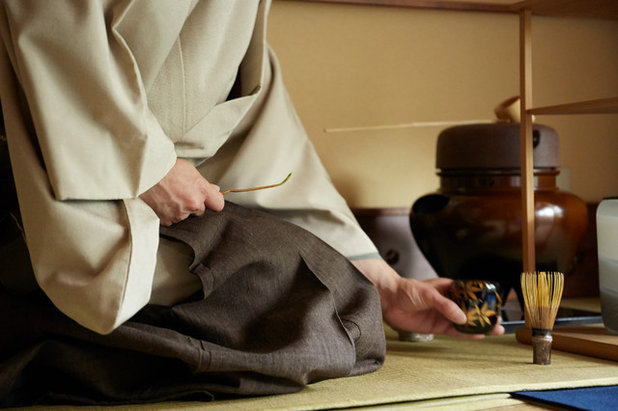


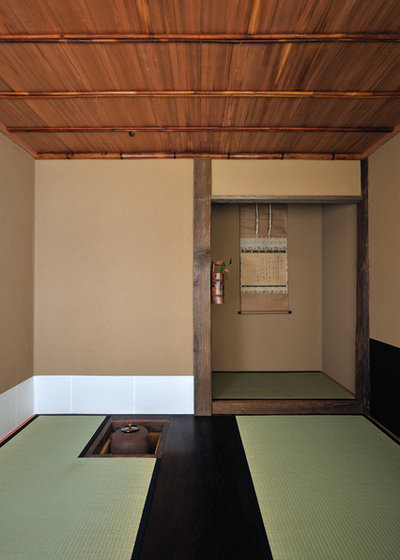
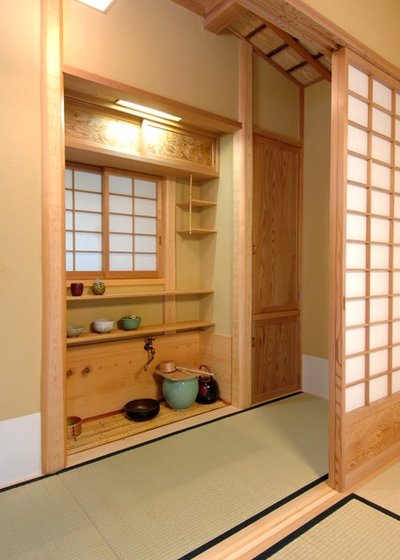


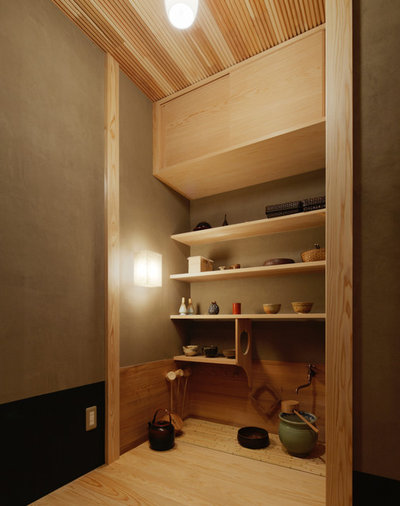






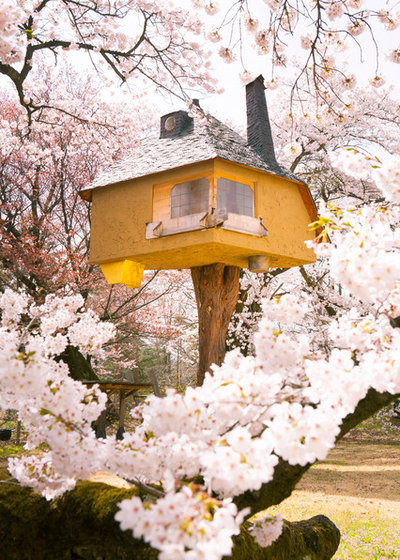

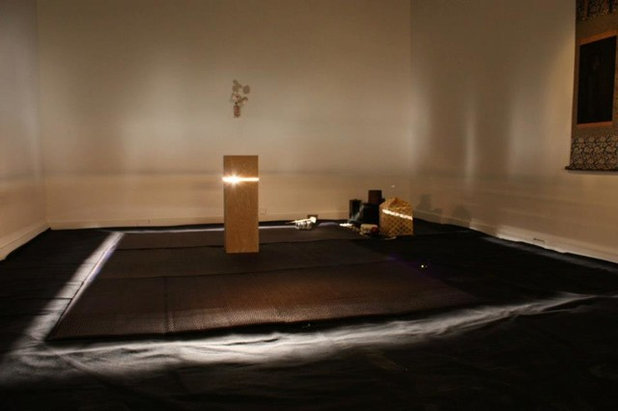
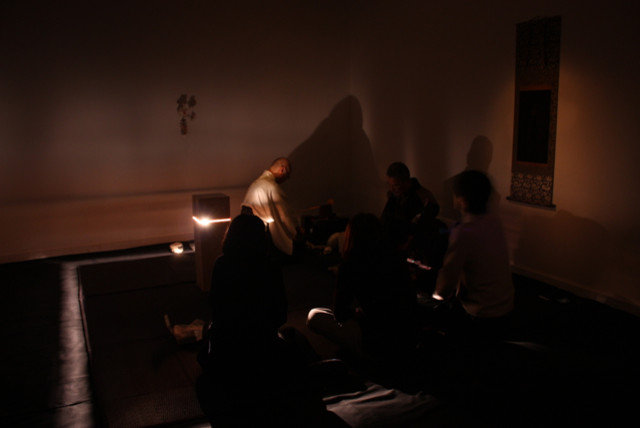



Terima Kasih sudah memberikan komentar pada artikel ini.
Semoga bermanfaat
EmoticonEmoticon